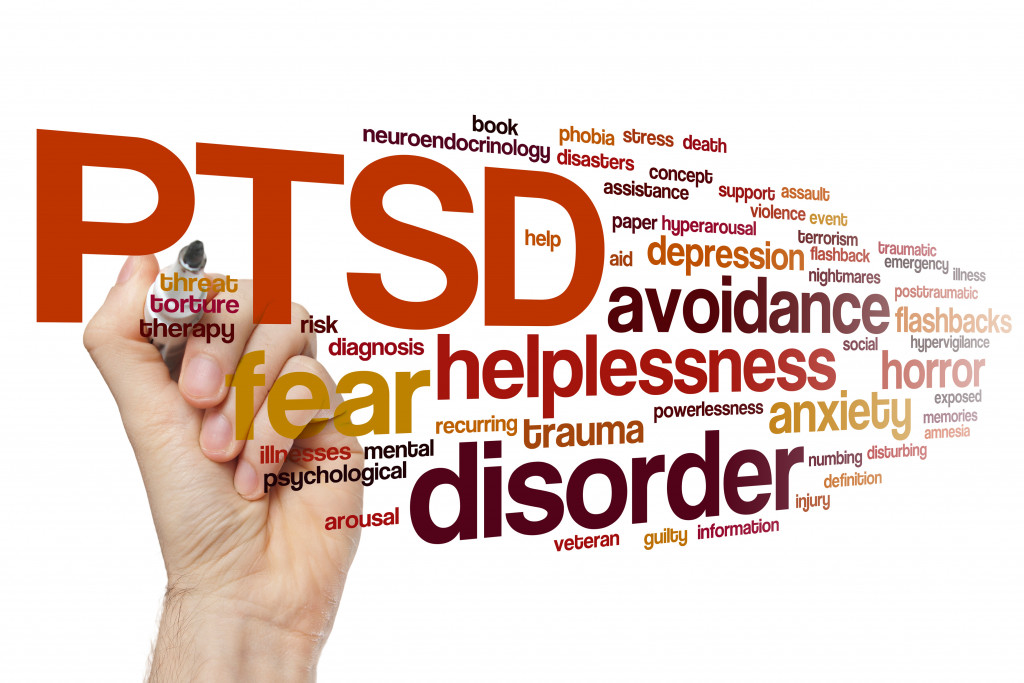- Identify your trigger points to manage anxiety better.
- Seek professional treatment for personalized advice.
- Practice mindfulness and self-compassion to reduce anxiety levels.
- Recognize and challenge negative thinking patterns.
- Get daily movement to help improve mood and decrease stress levels.
You have been feeling out of sorts lately, and it has been making you anxious. You are unsure what is wrong, but you know something needs to change. You may be dealing with an anxiety disorder if this sounds like you. Anxiety disorders can range from mild to severe and can affect your day-to-day life in many ways. Fortunately, there are several practical steps that you can take to manage your symptoms and improve your quality of life. This article will discuss the five most effective ways to deal with an anxiety disorder so that you can start feeling better and get back on track.
1. Identify Your Trigger Points
One of the best ways to manage your anxiety is to identify the triggers that can set it off. Anxiety is a reaction in response to specific situations or stimuli, and these triggers can vary significantly from person to person. It could be something as simple as being around large crowds or as complex as an impending deadline. Once you have identified the specific events or circumstances that make you anxious, you can start to work on managing them.
For example, if you find that being around large crowds sets off feelings of anxiety, practice mindful breathing techniques to help you stay calm and manage your stress. Additionally, if you know that a certain deadline is causing you anxiousness, break down the task into smaller steps and plan ahead so that it doesn’t become overwhelming.
2. Seek Professional Treatment

It is also essential to seek professional treatment when dealing with an anxiety disorder. A qualified mental health professional such as a psychologist or psychiatrist can provide invaluable insight into your condition and help you create a personalized treatment plan that works for you. They may also recommend medications or other forms of therapy to manage your symptoms.
Here are some forms of therapy you can utilize for your anxiety:
Cognitive Behavioral Therapy (CBT)
Cognitive behavioral therapy (CBT) is a form of psychotherapy that can help you recognize and understand how your thoughts, feelings, and behaviors influence each other. It can be used to identify and modify problematic patterns of thinking or behavior to reduce anxiety. CBT effectively treats various types of anxiety disorders, including panic disorder, social phobia, and generalized anxiety disorder.
Ketamine
Ketamine therapy for anxiety has recently emerged as a possible treatment option if you are diagnosed with the disorder. Studies have shown that ketamine, an anesthetic drug traditionally used in surgery and other medical settings, can rapidly relieve symptoms associated with anxiety. Ketamine works by blocking the brain’s glutamate receptors, which are responsible for regulating mood and emotion. While more research is needed to determine the long-term safety and efficacy of ketamine for anxiety, some studies have found it to be a potentially promising treatment option.
Dialectical Behavior Therapy (DBT)
Dialectical behavior therapy (DBT) is a form of psychotherapy that focuses on helping individuals understand and change their thoughts, feelings, emotions, and behaviors. It combines cognitive-behavioral techniques with mindfulness to help people better manage difficult situations. DBT can be used to treat a wide range of mental health disorders, such as anxiety disorders, depression, eating disorders, substance abuse issues, and other mood disturbances.
Acceptance and Commitment Therapy (ACT)
Acceptance and commitment therapy (ACT) is a form of psychotherapy that combines cognitive-behavioral strategies with mindfulness practices to increase psychological flexibility. This form of therapy helps individuals accept their current situation while committing to changes in their lives. It can be used to treat various types of anxiety disorders, such as generalized anxiety disorder, panic disorder, and social phobia.
3. Practice Mindfulness and Self-Compassion

Mindfulness is a great way to manage anxiety, as it helps you stay in the present moment and focus on what is happening around you rather than getting caught up in anxious thoughts or worries about the future. Additionally, practicing self-compassion can help reduce anxiety by focusing on being kind and understanding toward yourself when things don’t go according to plan. Try activities such as deep breathing and mindful listening to practice mindfulness and self-compassion. Additionally, make sure to treat yourself with kindness and understanding in situations when you are feeling anxious or overwhelmed.
4. Recognize and Challenge Negative Thinking Patterns
It is also essential to recognize and challenge negative thinking patterns that are associated with anxiety disorders. Anxiety often causes you to catastrophize or think in terms of worst-case scenarios, making you even more anxious. By becoming aware of these patterns and working to change them, you can help reduce your anxiety levels.
This is often easier said than done, but it can be a valuable tool to help manage your anxiety. To start recognizing and challenging your negative thinking patterns, try the following steps:
- Identify when you are engaging in negative thoughts or behaviors. Are these thoughts based on evidence or assumptions?
- Challenge these thoughts by asking yourself if any evidence supports them.
- Work on reframing these thoughts in a more positive light
- Re-evaluate the situation with your new perspective.
- Reward yourself for challenging the negative thinking pattern.
Recognizing and challenging your negative thinking patterns can help reduce your anxiety levels. It takes practice and patience, but it’s an essential tool for managing anxiety.
5. Get Daily Movement
Finally, getting regular exercise is a great way to manage anxiety. Exercise releases endorphins which can improve your mood and help decrease stress levels. Additionally, being active helps keep your body healthy and can provide an outlet for anxiety-related negative feelings. Even something as simple as a short walk or bike ride daily can make a big difference in managing your symptoms.
Final Words
Anxiety disorders are complex conditions that require patience and dedication when it comes to managing their symptoms. But by taking the five steps discussed above, you will be well on your way to feeling better and regaining control over your life. Remember, there is no one-size-fits-all solution to managing anxiety disorders, so take the time to find what works for you, and don’t be afraid to ask for help if needed.

